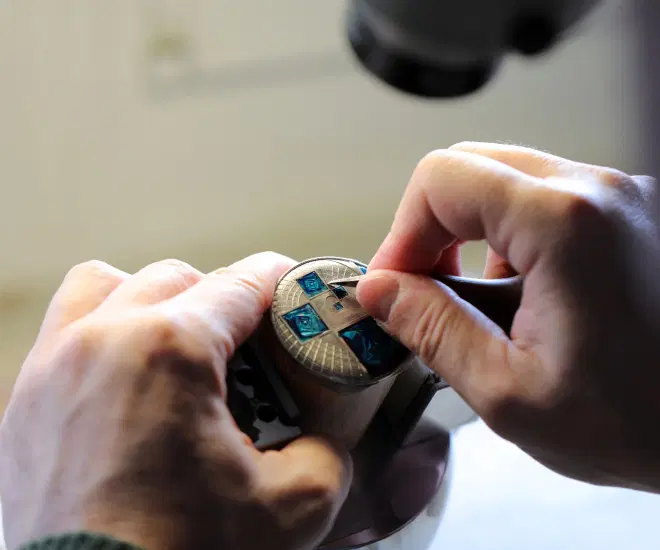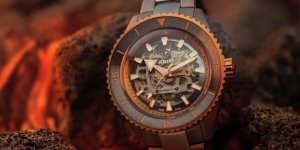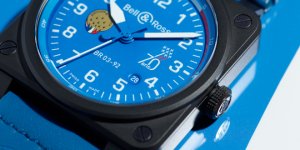Parmigiani Fleurier’s Art of Precision
We visit the Parmigiani Watchmaking Centre to understand how Parmigiani Fleurier can create something like the resolutely modern Tonda PF and the classic La Rose Carrée.

Nowhere is industrial production more emotive and appealing to the broader world than in watchmaking. From understanding the biggest suppliers such as ETA to niche independent watchmakers such as Roger Smith in the UK, it seems everyone wants to know how watches are made. Of course, when it comes to looking under the hood, as it were, there is not much point if you do not know what to look for, but we are getting ahead of ourselves. Backtracking a little, stating that “everyone” wants to know about the screws and bridges is a big claim. There are no studies looking into the nitty gritty of watch production, and the desire of the watch-loving public to learn about it, as far as we know.
On the other hand, given the lengths by which demand for mechanical watches is outstripping supply, it is only natural that watch enthusiasts wonder about what is happening in the manufactures. If demand goes up, production should rise to match, and this is indeed the expectation. For this expectation to match reality though, it is certainly helpful to know how watch manufactures work… which is where our invitation to visit the Parmigiani Fleurier manufacture comes into the picture.

What we can say here, with regards to Parmigiani Fleurier, is that it can produce watches entirely with internal resources and know-how. To be absolutely clear about it, the following are the only things Parmigiani Fleurier sources from external suppliers — sapphire crystals, synthetic rubies, leather straps (from Hermès, famously), bracelets and mainsprings. If you are a regular reader, you might recognise that list from our Parmigiani Fleurier story early last year.
Having already delved into the workings of Parmigiani Fleurier back then, we thought we would complete that picture by actually visiting the Fleurier and La Chaux-de-Fonds facilities that make up the Parmigiani Watchmaking Centre. But wait, why are Parmigiani Fleurier watches made in La Chaux-de-Fonds in the first place, and what is this Parmigiani Watchmaking Centre? And thus the complexity begins, and by reading this perhaps you will better understand why the Tonda PF — introduced just last year — remains such a tough get.
As a quick aside here, because we will not dwell on it, but the sharp-eyed amongst you will have taken note that the absolutely amazing Tonda PF bracelet does not come from Parmigiani Fleurier. That surprised us when we recalled it in the aftermath of the release of the Tonda PF (the tl;dr on this collection is that does sports luxury at the highest level). The brand has a supplier for the bracelet, one that (presumably) worked on the similar but totally different Tonda GT bracelet. While Parmigiani Fleurier has not revealed who makes the bracelets, CEO Guido Terreni told us that he specifically wanted the design evolution on the PF bracelet, rather than the same Tonda GT bracelet, including the specific details about how it fits and how it looks.

This squares well with Terreni’s past statement that making the screws in-house is not that spectacular, compared with actually making the watch, or indeed being able to restore an antique timepiece. Parmigiani Fleurier is, after all, a watchmaker, not a producer of watchmaking movement screws. This paragraph will stand as a counterpoint to the argument that vertical integration is the answer to everything. This is especially important here because the Parmigiani Watchmaking Centre does indeed produce its own screws. It is also important because founder Michel Parmigiani cut his teeth on watch restoration, and it is the reason Parmigiani Fleurier and the Parmigiani Watchmaking Centre exist.
Underscoring this are the images of the in-house restoration of the Parmigiani Fleurier La Rose Carrée. As we noted in our story on Luxuo.com on this, the pocket watch took 12 months to complete… or 25 years… or 100 years… or maybe more than 500 years. La Rose Carrée is the real reason Parmigiani Fleurier is included in our Legacy issue. It speaks to the intent of Parmigiani Fleurier to preserve and advance the craft of watchmaking. This is exactly why Terreni speaks in glowing terms of Michel Parmigiani’s “black belt in watchmaking,” because that is how he sees the art of restoration. Indeed, this is the very reason the Sandoz Family Foundation financed the creation of the Parmigiani Fleurier brand and the entire Parmigiani Watchmaking Centre.
To complete the picture, you should recall that Parmigiani Fleurier’s production facilities extend beyond the two locations mentioned, just as its expertise goes beyond the making of commercial pieces. We did not get to visit escapement-maker Atokalpa and high-precision micromechanics company Elwin this time, although we did briefly get acquainted with the restoration atelier in Fleurier itself before we had to scamper off for our interview with Terreni. Fortunately, we have learned enough about all the production facilities over the years that we can provide a brief introduction.
The reason for getting into all of this, and drawing a comparison between the disparate worlds of the Tonda PF and La Rose Carrée is to illustrate the watchmaking philosophy of Parmigiani Fleurier. It is a more poetic, and visually pleasing, way of understanding how the contemporary and traditional can both coexist and support each other.
On that note, La Rose Carrée is a collaborative work, with a Louis-Elisée Piguet grand sonnerie and minute repeater movement (made between 1898 and 1904) that was acquired by Michel Parmigiani in the late 1990s. A Parmigiani Fleurier restoration team went to work on this movement, alongside the technicians at LAB but also outside experts such as dial-maker LM Cadrans and chain-maker Laurent Jolliet. The involvement of an outside dial-maker is intriguing but Quadrance & Habillage was probably busy with the oversubscribed Tonda PF, or was perhaps unfamiliar with the onyx dial of the pocket watch.

With the Tonda PF, the situation was quite different of course. Indeed, the collection was developed in record time, debuting in less than a year after Terreni took over as CEO. Such rapid development is simply impossible at most manufactures, yet Terreni felt it was feasible at Parmigiani Fleurier because everything needed to create the collection already existed. That, in a few words, is exactly how impressive this Watchmaking Centre is.
While some watch brands can present sizable corporate offices, and perhaps even beautifully restored chateaus, these are often just so much window dressing. Whatever else happens in these locations, watchmaking is frequently peripheral. Not so at Parmigiani Fleurier, where the entire system of etablissage that characterises traditional Swiss watchmaking has been assembled from the ground up in some cases. There are a few parts to the watchmaking hub here, and they are not owned by Parmigiani Fleurier, per se. Instead, all are owned by the Sandoz Family Foundation, including the watchmaking brand. The various parts of the Fleurier watchmaking hub are broken down as follows:
Elwin
Bar turning is what this firm is best known for, which is a process of making components out of metal bars by machining them as they rotate. Elwin happens to make its own CNC machinery, which demonstrates the level of its mastery. It also develops its own specialised software. Interestingly, this small company of just 20 makes each employee responsible for his or her own production process, much as one watchmaker handles his entire process. The firm produces screws, pinions, spindles and wheels.
Atokalpa

This amazing firm does what few others can: produce the components of the escapement. These are the escape wheel, the pallet fork, the balance wheel and the balance spring. According to Parmigiani Fleurier, Atokalpa performs such processes as stamping, cutting, bar turning, and forming teeth on computer-numericalcontrolled machines (commonly called CNC) with a precision of up to 0.001mm. Finishing processes, both structural and aesthetic, are also performed on the aforementioned escapement components (where relevant) here. In terms of aesthetics, these processes include snailing, circular graining, polishing and bevelling. Every component that requires finishing receives attention, which is a nigh-unbelievable attention to detail. In most other watchmaking firms, all of this work is done off-site. The Swatch Group firm ETA does all of this for innumerable brands.
Vaucher Manufacture Fleurier (VMF)
Michel Parmigiani told Revolution in 2013 that in order for Parmigiani Fleurier to fully utilise the capacity of Vaucher, it would have to make between 20,000 and 25,000 movements, and that this is unlikely to happen. In order to optimise the manufacture’s potential, it supplies other parties, even though it was built to supply Parmigiani Fleurier. The most famous of these outside firms is Hermès of course, with the luxury firm owning 25 per cent of Vaucher, and Richard Mille.
Bridges and plates are made here, and movements are assembled. Finishing, including handfinishing, also happens in its workshops. There is a hightech side here too, with a research and development department that handles all the watchmaking innovation. The technical drawings of all movements emerge from this department, specifying all operations to be carried out. If Michel is the spirit of Parmigiani Fleurier, Vaucher Manufacture Fleurier is its central nervous system.
Quadrance & Habillage

A specialist in the making of watch dials, this firm has mastered guillochage, sandblasting, satin-finishing, snailing, eparnage and graining, among others. Since 2017, Parmigiani Fleurier has been touting the white grained finish on its dial, and this is a technique Quadrance & Habillage has mastered. Basically, the white grained effect is produced by rubbing silver powder onto a brass plate using a horsehair brush. Needless to say, it is a labour-intensive task that must be done by hand and requires the absolute concentration of a highly skilled artisan.
Les Artisans Boitiers (LAB)
As the name suggests, this is the casemaking outfit of Parmigiani Fleurier. Water-resistance and structural integrity of the watches are ensured here. While CAD and CNC machining are the meat-and-drink of LAB, the company is also able to produce cases entirely by hand, using traditional tools. This is of course where the extraordinary 64mm white gold case, with double hunter structure, of La Rose Carrée was formed. Engraver Eddy Jaquet created a Rose Carrée motif for both covers. As you can see, the roses are square, which is reportedly a reference to the form rose petals take when they start to wither. Handworked to the nth degree, the covers are also awash in blue.
“The blue of La Rose Carrée expresses the colour of a body of water as one would see it from the sky – with all the nuances and subtle changes in the shades of blue according to the various depths,” said Michel. Deceptively simple looking in pictures, there are actually four layers of blue grand feu enamel, applied by artistic enameller Vanessa Lecci. It is worth bearing in mind that both the engraving and the enamelling appear the same on both covers, which is a very impressive feat.
Beyond that, all Parmigiani Fleurier case middles receive hand-polishing attention, which is hard to fathom. It is worth noting that the expertise of both LAB and Quadrance & Habillage are used by at least 18 famous names in watchmaking.
For more watch reads, click here.







